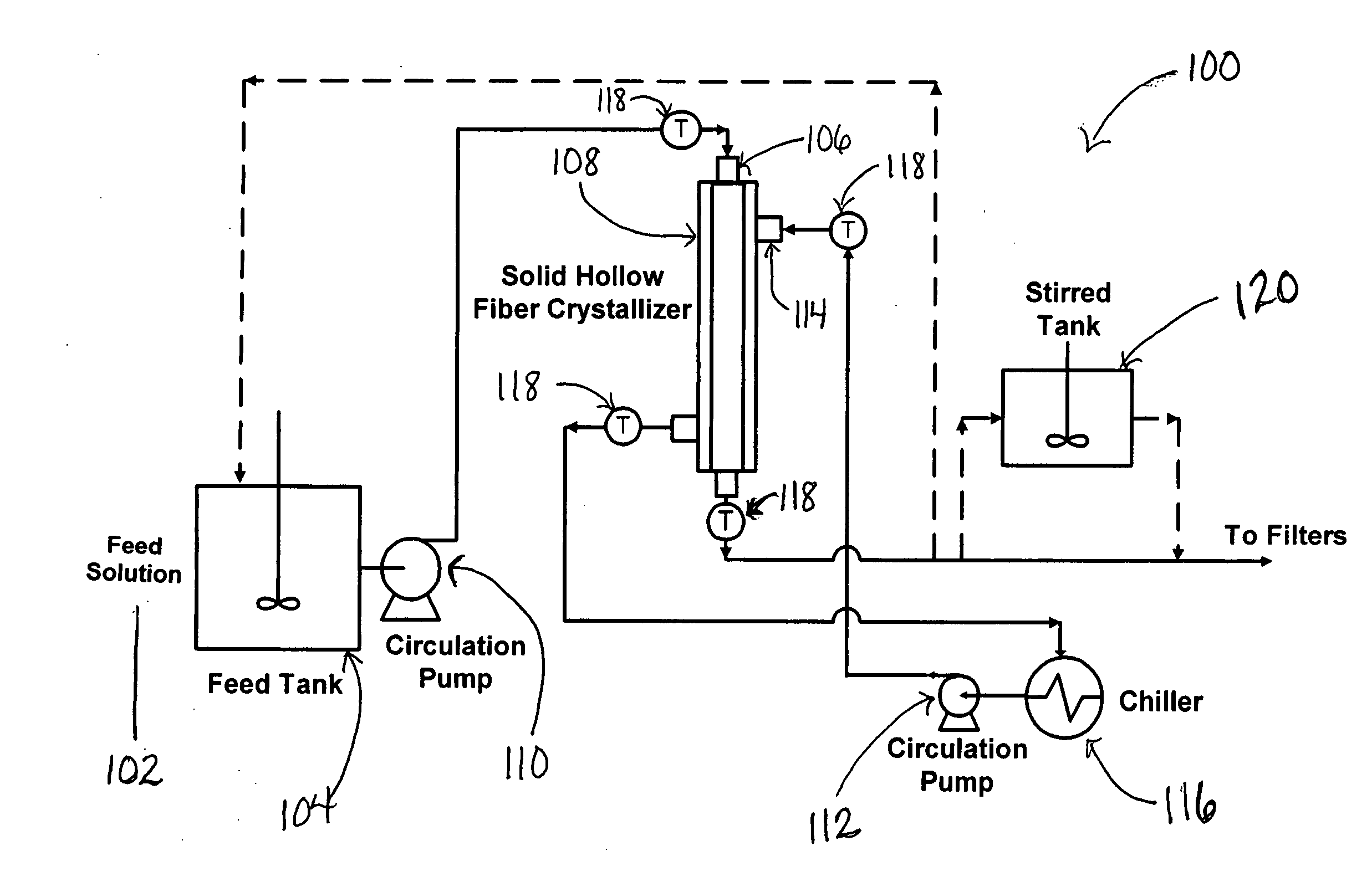Solid hollow fiber cooling crystallization systems and methods
a technology of solid hollow fibers and crystallization systems, applied in the direction of crystal growth process, crystal growth plant arrangement, polycrystalline material growth, etc., can solve the problems of poor mixing, general disadvantage of msmpr crystallizers, fouling of heat transfer areas, etc., to facilitate effective decoupling of crystal nucleation and crystal growth phenomena, and enhance the flexibility and applicability of disclosed devices/systems , the effect of high cooling ra
- Summary
- Abstract
- Description
- Claims
- Application Information
AI Technical Summary
Benefits of technology
Problems solved by technology
Method used
Image
Examples
examples
Illustrative Example No. 1
KNO3 Crystallization
[0089] Aqueous potassium nitrate solutions were prepared by dissolving potassium nitrate (>99%, Sigma Aldrich, St Louis, Mo.) in deionized water. Denatured alcohol (Fisher Scientific Inc., Pittsburgh, Pa.) was used in KNO3 crystal sizing by laser diffraction measurements. Polypropylene solid hollow fibers of 420 / 575 μm ID / OD (Celgard, Charlotte, N.C.) were used for the fabrication of two almost identical modules. Module #1 was fabricated with 35 fibers of 21.9 cm length, while module #2 had the same number of fibers and an active length of 20.3 cm. The experimental setup used is shown in FIG. 2.
[0090] Results obtained with aqueous KNO3 solutions for the SHFC-CST in series and the once through operation modes were compared with those for conventional Mixed Suspension Mixed Product Removal (MSMPR) cooling crystallizers based on literature data13,14. The results for the once through and the feed recycling operation modes are similar and ...
PUM
| Property | Measurement | Unit |
|---|---|---|
| temperature | aaaaa | aaaaa |
| temperature | aaaaa | aaaaa |
| diameter | aaaaa | aaaaa |
Abstract
Description
Claims
Application Information
 Login to View More
Login to View More - R&D
- Intellectual Property
- Life Sciences
- Materials
- Tech Scout
- Unparalleled Data Quality
- Higher Quality Content
- 60% Fewer Hallucinations
Browse by: Latest US Patents, China's latest patents, Technical Efficacy Thesaurus, Application Domain, Technology Topic, Popular Technical Reports.
© 2025 PatSnap. All rights reserved.Legal|Privacy policy|Modern Slavery Act Transparency Statement|Sitemap|About US| Contact US: help@patsnap.com



